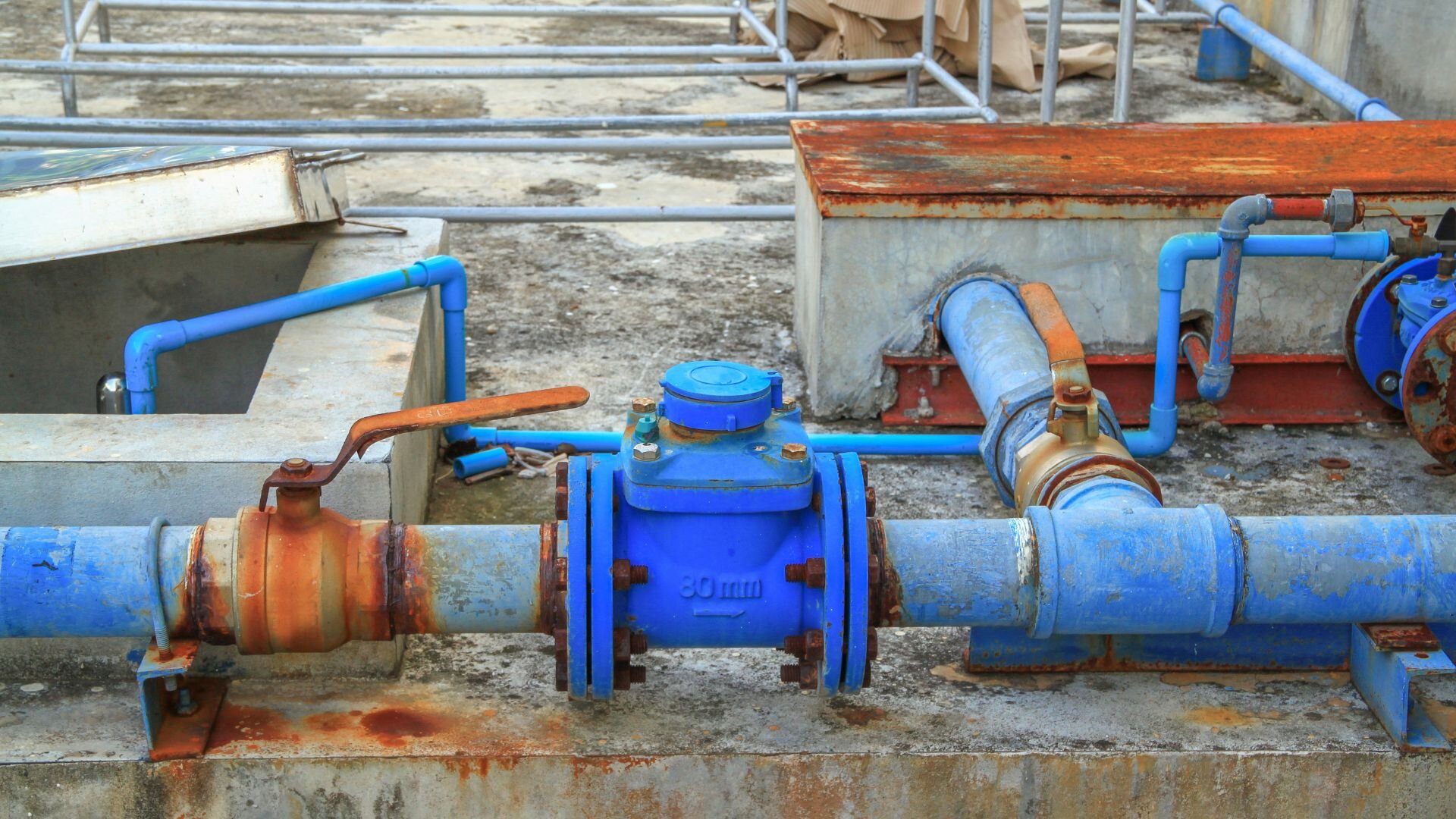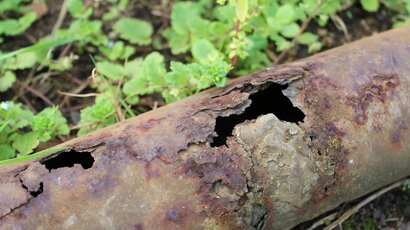Dealing with pipe corrosion is a common issue that can weaken a home’s plumbing system over time. This process happens through complex chemical and electrochemical reactions between the pipes’ materials and the substances they interact with. If not managed, corrosion can weaken pipes significantly, even leading to failure.
Corrosion eats away at metal pipes through gradual oxidation, compromising their structural strength. There are several types of corrosion that can impact residential plumbing systems.
Uniform corrosion causes evenly distributed thickness loss across a pipe’s surface. Pitting corrosion forms deep cavities that penetrate the metal. Galvanic corrosion occurs when two dissimilar metals connect, resulting in one metal corroding preferentially.
Many factors contribute to pipe corrosion within a home’s water chemistry and plumbing environment. Understanding these causes is crucial as it helps homeowners spot potential risks and take preventive measures.
This article explores some of the most common causes of pipe corrosion within residential plumbing systems. Let’s examine how variables like water characteristics, temperature, materials selection and more can all potentially contribute to this destructive process over time.
The Most Common Causes Of Pipe Corrosion
![]()
Water Chemistry
The way your water interacts with your pipes is key to understanding pipe corrosion. Water rich in minerals, such as iron, can speed up corrosion in copper piping.
Acidic water with a low pH level is also very corrosive and can lead to corrosion problems in metal pipes over time. Total dissolved solids (TDS) refer to the dissolved inorganic and organic substances in water, including calcium, magnesium, sodium, and chloride. High TDS water is also more corrosive.
Oxygen
Dissolved oxygen in water can lead to corrosion by reacting with the metal inside pipes. Specifically, it causes copper corrosion when it contacts copper piping. Using a chlorinator or ozone system to remove dissolved oxygen can help reduce corrosion.
Temperature
Hot water temperature dramatically increases the rate of pipe corrosion. Because of this, hot water systems and circulating hot water lines are more prone to early corrosion failure. The corrosion process speeds up exponentially with increased heat.
Velocity
Hydraulic wear, which is water causing hydraulic wear and erosion inside the pipe, is directly related to water velocity. High-velocity water flow in the pipe can mechanically abrade and erode pipe material over time. Installing improvements like inline filters and minimising pipe velocity helps reduce this type of corrosion.
Materials
While all metal pipes are subject to corrosion, different materials corrode via various mechanisms and vary in vulnerability.
For example, while copper piping is very durable, it is highly susceptible to corrosion in the presence of specific water components like chlorine. Plastic pipes like PEX are more resistant but not immune to all forms of corrosion, either. Material selection plays a role based on local water conditions.
Microorganisms
Bacteria, algae, and fungi can contribute to microbiologically influenced corrosion or bacterial corrosion of pipes underground or in specific systems. Iron bacteria is one example that accelerates corrosion processes in cold water pipes through metabolic waste products.
Stray Current or Galvanic Action
Dissimilar metal pipes joined together or in contact with other materials, like improperly grounding electrical appliances, introduce the risk of galvanic or stray current corrosion. This occurs when one metal corrodes preferentially over the other due to electrical potential differences.
Chemicals
Chemical drain cleaners and chemical reactions between treated water and the piping material can induce or worsen corrosion processes. Drain cleaners are highly acidic or alkaline and aggressive on metal pipes. This also occurs when reverse osmosis units or water softeners are not maintained correctly via sediment sand or phosphate feeder.
Installation or Design Issues
Factors like improper installation where two dissimilar metals are joined, lack of insulation for hot water lines, circulating hot water systems designed without corrosion inhibitors, and undersized water pipes inducing high velocity can all promote corrosion problems.
Sediment
Sediment build-up on the pipe’s interior provides surfaces for corrosion reactions and bacteria to thrive. Periodic flushing helps remove sediment that can abrade pipe material over time. Water analysis may reveal sediment as a corrosion indicated by hardness.
Transforming Knowledge into Protection
![]()
While some corrosion is inevitable, knowing the common causes helps homeowners take preventive steps through water treatment, proper system maintenance, and using corrosion-resistant materials as needed.
This can help protect a home’s piping system and foundation from the costly damage that corroded pipes may otherwise cause. If you are concerned about existing pipe corrosion in your plumbing network, it is wise to contact a plumber.
Protecting Your Pipes Through Prevention and Maintenance
As we’ve explored, many potential culprits can lead to pipe corrosion forming and progressing inside your home’s water network. While unavoidable to an extent, addressing corrosion risks requires an integrated approach focused on prevention, early detection, and responsive repair or replacement when problems arise.
Regular checks of accessible piping allow you to monitor signs of deterioration in their earliest stages. Catching issues before significant damage occurs is critical to avoiding costly restoration work. Engaging a professional plumber is also wise; their expertise and specialised tools can inspect pipes hidden behind walls.
Trust the experts to protect your home’s essential plumbing system. Based in Melbourne, WP Plumbing offers trusted assessments and responsive solutions for all your corrosion prevention and pipe repair needs. Their licensed professionals can evaluate your piping system, recommend fixes, and handle any necessary updates or replacements.
Contact WP Plumbing today to discuss a customised pipe assessment or receive recommendations for a tailored corrosion prevention strategy.





